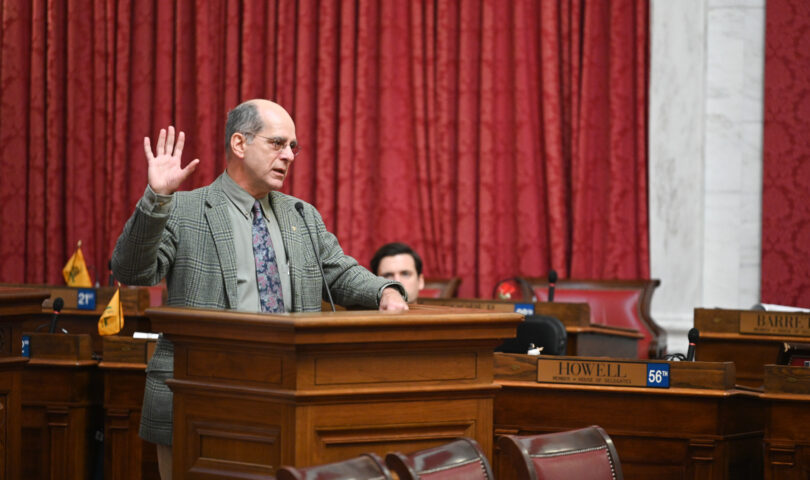MORGANTOWN – The Legislature’s Joint Standing Committee on Energy got a look on Tuesday at a West Virginia project to extract valuable rare-earth elements (REEs) from acid mine drainage and got a first look at a bill to answer the question of who owns the runoff and the REEs in it.
Before answering that question, though, it’s useful to know what REEs are. The U.S. Geological Survey says the 17 metallic elements “are necessary components of more than 200 products across a wide range of applications, especially high-tech consumer products, such as cellular telephones, computer hard drives, electric and hybrid vehicles, and flat-screen monitors and televisions. Significant defense applications include electronic displays, guidance systems, lasers, and radar and sonar systems.”
About 97% of the world REE production is from China, USGS says.
Paul Ziemkiewicz, director of WVU’s Water Research Institute, told the committee that only one site in the U.S., in California, produces REEs and it’s 10% owned by Chinese interests, and all of the product goes to China.
He’s been working on a project in conjunction with the state Department of Environmental Protection and the U.S. Department of Energy, funded by the DOE, to extract REEs from acid mine drainage at a treatment plant at Mount Storm. The REE recovery plant is connected to the treatment plant.
Ziemkiewicz told the committee he’s also just given DOE a six-month supply chain study linked to a possible larger-scale plant at the defunct Fola mine complex in Clay county.
Rare earth elements aren’t rare – they’re often found in other minerals, in the ground and in coal and fly ash. But they’re found in tiny amounts and take a lot of work to extract.
The advantage of extracting REEs form mine drainage, Ziemkiewicz said, is that they’re already in solution, making it easier to separate them out, and there’s no costly and time-consuming permitting involved because whoever is doing the mine drainage treatment already has a permit to do that. You just have to reconfigure the treatment process to recover the REEs.
“You can go into production tomorrow almost, if the technology is there and the supply chain is there,” he said.
The supply chain study, he said, was drafted to show the DOE that its goal of 1-3 tons per day of REEs and critical minerals could be achieved. “We were able to do that, basically.” One liter of mine drainage will have about 1 milligram of REEs, he said, so a profitable plant would require collection from hundred of sites.
Additional advantages of this process, he said, include benefiting national security, benefiting the environment because the byproduct of the process is clean water, and incentivizing the treatment of mine discharges.
One challenge, he said, will be answering the question of ownership of the drainage and the extracted REEs and critical minerals. Without that answered, lawyers will drag every effort into court. “That’ll kill this industry. … That land owner or mineral rights owner will own 100% of zero because there wont be an industry.”
To answer that question, DEP attorney Jason Wandling presented the committee with a draft bill. It’s based on the idea that someone who has taken the time, effort and expense to fix a problem should benefit from the product of the solution.
The bill says that everything of value in the treatment may be used by the treating party or its designees for their commercial benefit. “It you treat it and you get something out of it and you can sell it,” he said.
Part of those proceeds, he said, could help DEP’s Office of Surface Reclamation fund its expensive treatment programs. That can help keep the SR treatment fund solvent and lessen the tax burden on the companies doing the treatment. “I don’t see where there’s a loss for the state there.”
Answering a question from Delegate Evan Hansen, D-Monongalia, Wandling told the committee that if a watershed group such as Friends of Deckers Creek or Friends of the Cheat is treating the mine drainage, it would be eligible to keep the proceeds of the extracted REE sales.
TWEET David Beard @dbeardtdp EMAIL dbeard@dominionpost.com




